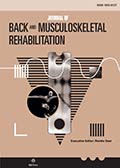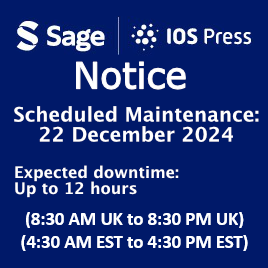Authors: Lara-Palomo, Inmaculada Carmen | Capel-Alcaraz, Ana María | García-López, Héctor | Castro-Sánchez, Adelaida María | Querol-Zaldívar, María de los Ángeles | Fernández-Sánchez, Manuel
Article Type:
Research Article
Abstract:
BACKGROUND: Chronic low back pain can severely affect quality of life. While several treatments are available, the combination of therapies often results in better outcomes. OBJECTIVE: This study delves into the comparative effectiveness of combining monopolar dielectric diathermy radiofrequency (MDR) with supervised therapeutic exercise against the latter treatment alone. METHODS: A randomized single-blind controlled trial was conducted. The intervention group (n = 30) received MDR with supervised therapeutic exercises for eight weekly sessions for four weeks. The control group (n = 30) received
…only the same exercise protocol. The following self-report measures were assessed before the first treatment session, at four, and 12 weeks: disability, pain, kinesiophobia, quality of life, sleep quality, emotional distress, isometric trunk strength, and trunk flexion range. RESULTS: Repeated ANOVA measures revealed significant time*group interactions for the McQuade test (p = 0.003), the physical role (p = 0.011), vitality (p = 0.023), social function (p = 0.006), and mental health subscales (p = 0.042). Between-group analyses showed significant differences for all outcomes at each follow-up: RMDQ (post-treatment, p = 0.040), ODI (post-treatment and 12-week, p = 0.040), VAS (p < 0.001), TSK (p < 0.001), and McQuade Test (p < 0.020). CONCLUSION: The combination of diathermy radiofrequency with supervised therapeutic exercise significantly surpasses the efficacy of supervised therapeutic exercise alone, showcasing improvements in pain, disability, kinesiophobia, lumbar mobility in flexion, and overall quality of life in patients with chronic low back pain.
Show more
Keywords: Chronic low back pain, diathermy, electrophysical agents, radiofrequency, physiotherapy, therapeutic exercise
DOI: 10.3233/BMR-240118
Citation: Journal of Back and Musculoskeletal Rehabilitation,
vol. Pre-press, no. Pre-press, pp. 1-14, 2024
Price: EUR 27.50





